RSVPs are due April 17th❤️


Lydia & Alexander
RSVPs are due April 17th❤️

Lydia & Alexander
We understand that many of our guests are not familiar with the traditions present at a Traditional Catholic Mass Wedding Ceremony. We hope the information on this tab will illustrate the intricate workings and beauty of every part of the Mass so our guests can fully understand and fully experience our ceremony.
On our wedding day, we want to share what we love the most with the people we love the most: our Catholic faith. It is important for our guests to know that while our ceremony is about the union of two people who love each other, the main reason we are there is to celebrate the greatest gift ever given to humankind, the Crucified Jesus. He is fully present in the Eucharist at every mass, and He is the most important person present during our ceremony. We hope our wedding day resembles even an ounce of the outpouring, infinite love Christ has for each and every one of us.
If you have any questions about our ceremony or Catholicism, please reach out to the Bride at 931-337-8188 or the Groom at 931-494-6692. We will happily answer any and all questions.
Due to the reverence of the Mass, we kindly ask that any guests with small children remove themselves from the ceremony if their little one gets fussy.
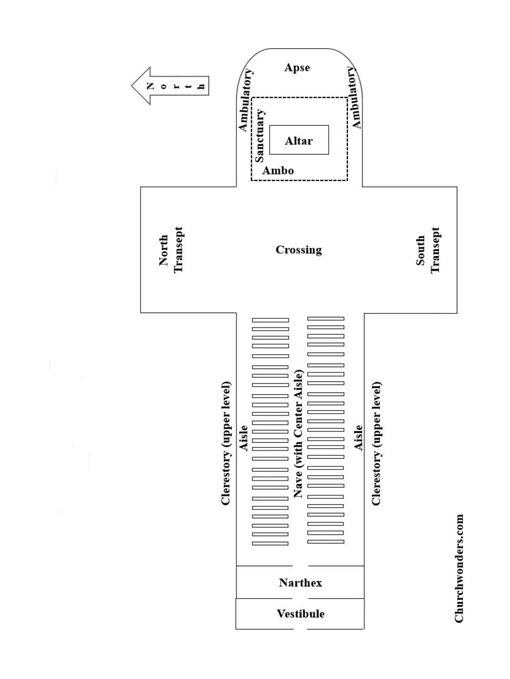
Vestibule- a spacious anteroom that serves as a transition space between the outdoors and the main church building.
Narthex- the church's entrance that's located between the nave and the door.
Nave- the central area of the church that's reserved for the laity, or the ordinary people.
Clerestory- the upper part of a church building that contains windows to light the interior (stain glass windows).
Crossing- the area where the transept intersects the main body of the church.
North/South Transept- Because the liturgy is supposed to be celebrated ad orientem (facing east), the left side of the transept is called the north transept and the right side of the transept is called the south transept.
Ambo- An ambo is a raised desk or platform in a Catholic church where the word of God is proclaimed during Mass.
Alter- the altar is a central table or structure that represents the presence of Christ, the heart of Christians, and the place where the priest celebrates the Eucharist.
Sanctuary- the front area of the church that contains the altar, where the priest stands during Mass, and where the Word of God is proclaimed.
Ambulatory- a covered passage or aisle that circles around the apse or chancel at the east end of the church.
Apse- a semicircular recess that's typically found at the end of the cathedral.
Notice the shape of the chapel. The transubstantiation of the host occurs at the alter where Christ's head is, and Communion occurs at the crossing where Christ's heart is.
Order of Celebrating Holy Matrimony Within Mass
Entrance Rite
The assembly stands. An entrance hymn is sung while everyone processes in. The processional order is as follows:
1. Priest, Deacon, and Alter Servers
2. Groomsman
3. Best man
4. Groom
5. Bridesmaids
6. Maid of Honor
7. Ring bearer and Flower Girl
8. Groom's Maternal Grandmother
9. Groom's Parents
10. Bride's Maternal Grandmother
11. Bride and her Mother
Greeting
Father begins Mass with the Sign of the Cross. He welcomes all guests, and it is customary to respond back.
Gloria
The Gloria is sung, preferably by the whole assembly. The words to the Gloria can be found on the inside cover of the hymnals on either side of the pews.
Opening Prayer
Father invites the assemble to pray, then offers a prayer for the Bride and Groom. At the conclusion of the prayer, the assembly is seated for the Liturgy of the Word.
First Reading
The first reading (from the Old Testament) is proclaimed by the lector. At the conclusion of the reading, the lector says, "The Word of the Lord," and the assembly responds, "Thanks be to God."
Responsorial Psalm
The cantor sings a psalm, and the assembly sings the response.
Second Reading
The second reading (from a book of the New Testament other than the Gospel) is proclaimed by the lector. At the conclusion of the reading, the lector says, "The Word of the Lord," and the assembly responds, "Thanks be to God."
Gospel Acclamation
The assembly stands. The cantor leads the assembly in singing the Gospel Acclamation, usually the Alleluia.
Gospel
The priest (or deacon) proclaims the Gospel. At the conclusion, he says, "The Gospel of the Lord," and the assembly responds, "Praise to you, Lord Jesus Christ." The assembly sits.
Homily
The priest (or deacon) offers a homily drawn from the Scripture readings. According to The Order of Celebrating Matrimony, the presider "uses the sacred text to expound the mystery of Christian Marriage, the dignity of conjugal love, the grace of the Sacrament and the responsibilities of married people, keeping in mind, however, the circumstances of this particular marriage" (#91, Catechism of the Catholic Church)
Address and Statement of Intentions
All stand, including the bride and groom and witnesses. The priest asks the couple questions to state their intentions about their freedom of choice, fidelity to each other, and the acceptance and upbringing of children. The bride and groom respond to each question separately, "I am."
Exchange of Consent
Father invites the couple to declare their consent to be married, which they do by stating their marriage vows. Father affirms the reception of the consent then leads the assembly in an acclamation which may be sung.
Blessing and Giving of Rings
The priest blesses the wedding rings through prayer and the sprinkling of holy water. The husband places his wife's ring on her finger, and the wife places her husband's ring on his finger.
The Universal Prayer
The Universal Prayer is read by a lector, cantor, or another designated person. The reader usually offers each intercession ("For ..., we pray to the Lord.") and the assembly responds with an appropriate response, such as, "Lord, hear our prayer."
Presentation and Preparation of the Gifts
The assembly sits and sings the Offertory Hymn while the altar is prepared and the gifts of bread and wine are brought to the altar. When the priest says, "Pray, brethren (brothers and sisters), that my sacrifice and yours may be acceptable to God, the almighty Father," the assembly stands.
Eucharistic Prayer
The priest prays the Eucharistic prayer (parts of which he may sing). During the Eucharistic prayer, the assembly offers three acclamations, which are usually sung:
1. Sanctus (Holy, Holy) - Assembly kneels after singing
2. Memorial Acclamation
3. Amen- Assembly stands after signing
The Lord's Prayer
The assembly prays or sings together the Lord's Prayer (the Our Father)
Nuptial Blessing
The couple kneels at the altar where the priest faces them . The priest invites all present to join in silent prayer for the couple then extends his hands over the bride and groom and offers the blessing.
Sign of Peace
The priest invites the assembly to offer one another a sign of peace. The newly married couple and people in the assembly exchange a sign of peace (a handshake, hug, or kiss, usually accompanied by the words, "Peace be with you") with those immediately around them.
Lamb of God
The priest breaks the host (Eucharistic bread) while the assembly sings the "Lamb of God." The assembly kneels after singing.
Communion
The priest distributes the Body and Blood of Christ to Catholics in the assembly, beginning with the newly married couple. An appropriate hymn is usually sung as the assembly proceeds to the altar for communion. Please note that only Confirmed and Baptized Catholics may receive the Eucharist.
Blessing
The presider prays a solemn blessing over the married couple and the whole assembly. All participate in the blessing by repeatedly responding, "Amen." The ritual text indicates the witnesses may sign the marriage license in front of the assembly, though never with the license on the altar.
Dismissal
As with any Mass, the priest dismisses the assembly with an exchange like "Go in peace to glorify the Lord with your life" to which all gathered respond "Thanks be to God."
Recessional
The priest invites the newlyweds to exchange their first kiss. The couple, bridal party, alter servers, and clergy exit the church.
Catholic Questions
What is the structure of Mass?
What should I wear to Mass?
What is the sign of peace?
What is the Tabernacle?

What is the Eucharist?
Where is the Eucharist mentioned in the Bible?
Is the Eucharist a symbol?
Why can't I receive the Eucharist as a non-Catholic?
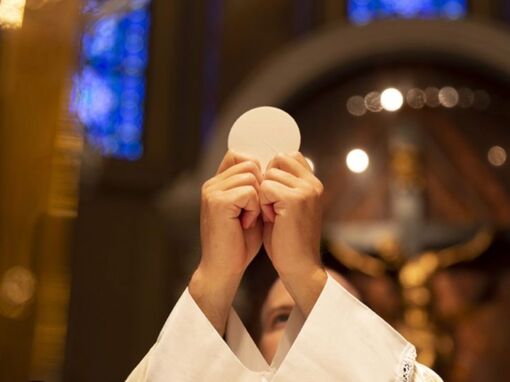
Why is Mary important to Catholics?
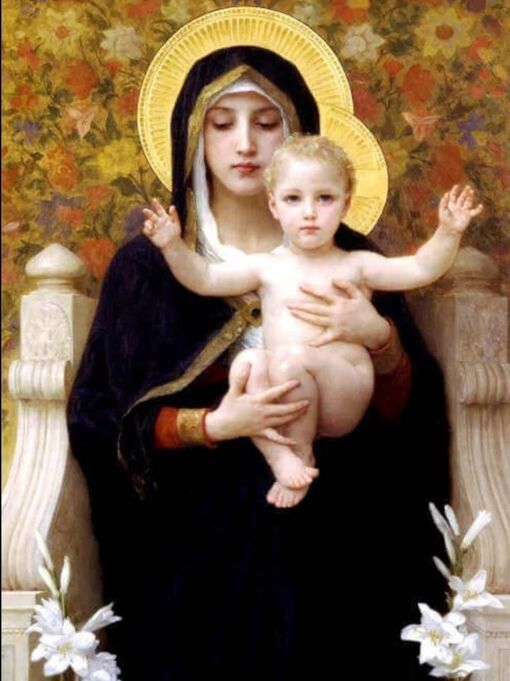
Why do Catholics pray to Mary?
Where is praying to Mary in the Bible?
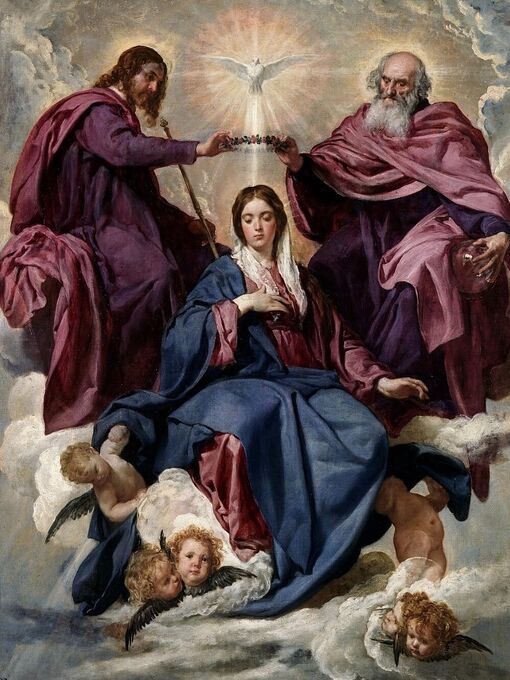
Do Catholics worship Mary?
Why to Catholics pray to Saints?
Where is praying to the Saints in the Bible?
Do Catholics worship the Saints?
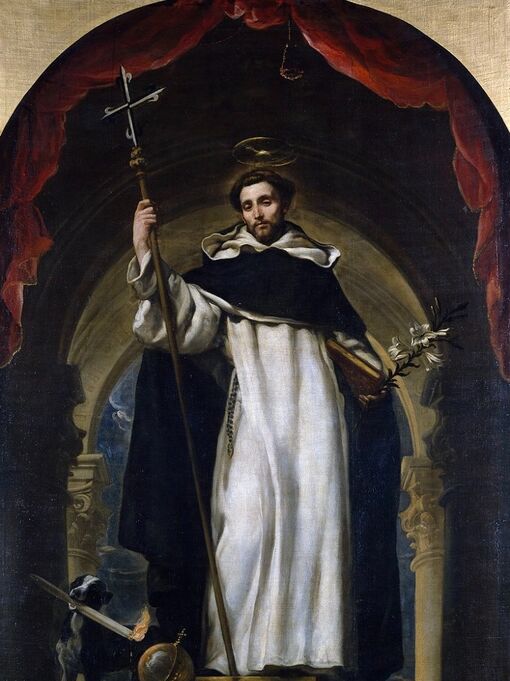
The Groom's Patron Saint:
St. Dominic
Feast Day: August 8th
Patron Saint of: Astronomers, astronomy, Dominican Republic, falsely accused people
Birth: 1170
Death: 1221
St. Dominic, pray for us.
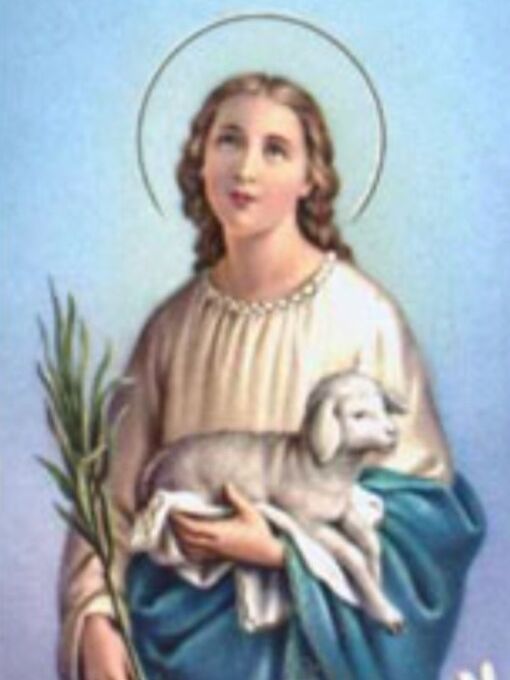
The Bride's Patron Saint:
St. Agnus
Feast Day: February 21st
Patron Saint of: Young girls, chastity, rape survivors, Children of Mary
Birth: 291
Death: 304
St. Agnus, pray for us.
Do Catholics practice idolatry?
What is the rosary?
Fun Fact:
The Bride is an avid Rosary collector :)
Can Catholics pray directly to God?
Why do Catholics call the priest "Father"?
What does it mean to genuflect?
Why do I have to kneel during Mass?
What is Papal authority?
Where is the papacy in the Bible?
